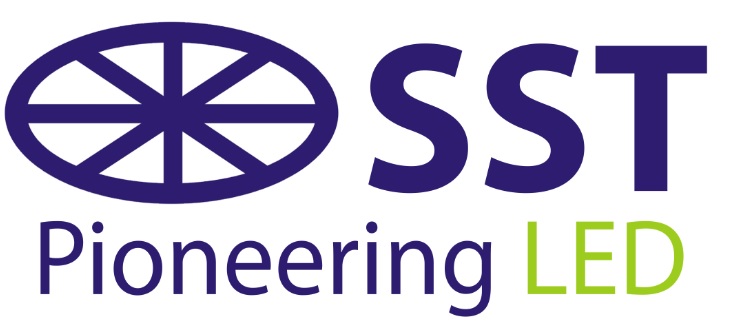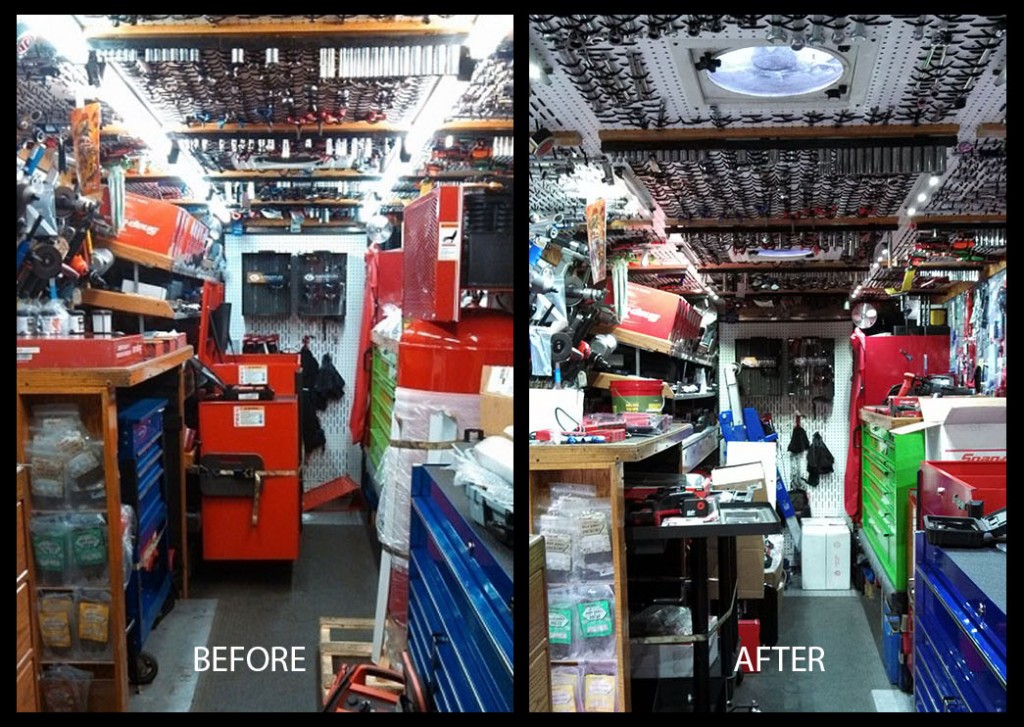Why do some objects look different under LED lights than under conventional lighting?
When a person enters a new lighting environment, the pupil in the human eye constricts or dilates as it adjusts to different lighting conditions to allow more or less light into the eye. Objects can appear different as the amount of light reflected by an object changes. Changes in an object’s appearance are more pronounced when the percentage of total light entering the eye as reflected by the object changes significantly.
The figure below shows a mechanic’s workshop in a mobile truck store being lit by fluorescent and LED lighting. As shown in the figure, object’s reflections tend to look clearer under LED lighting than under conventional lighting because:
- Light emitted by LEDs is more focused and directional than that emitted by conventional lights. A higher percentage of the directional light emitted by LEDs is reflected by objects and enters the pupil. In contrast, the light emitted by conventional lights is less direct, and a lower percentage of more scattered light emitted is reflected by objects and enters the pupil.
- Since more indirect (scattered) light emitted by conventional lights goes directly into the human eye, the pupil will constrict to allow less reflected light to enter.
A “Before” being lit by all fluorescent lighting, “After” all LED. Note that floors, countertops, and various objects look clearer and brighter under LED lighting.

